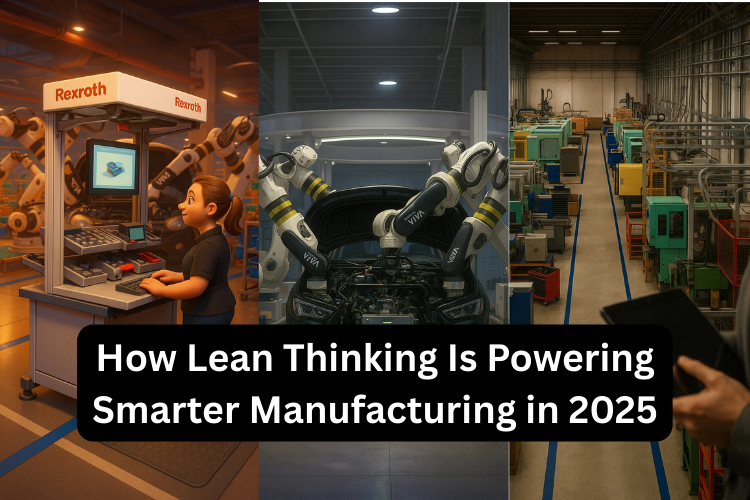Introduction
Manufacturing in 2025 is fast, automated, and data-rich. Yet, despite the rise of machines and AI, companies still rely on one simple approach to work better: Lean thinking. Lean focuses on removing waste, improving flow, and delivering what the customer wants, without extra steps.
This blog explains how Lean works in today’s factories, why it still matters, and how even small improvements lead to major gains.
To read more lean-related blogs, visit our website, kkbooks.
What Lean Means
At its heart, Lean is about doing more with less. It’s not just about saving money; it’s about cutting the steps that don’t add value. This could mean less inventory, fewer delays, shorter waiting times, or fewer errors. Lean was first used in car factories, but now it fits anywhere—whether you’re making auto parts, food, or even packaging.
Why Lean Still Matters in a Tech-Driven World
While automation speeds things up, it can also create confusion if not used properly. Lean brings clarity. It helps companies decide what should be automated, what must be improved, and where human attention is needed. Lean doesn’t replace machines—it guides them.
In 2025, successful manufacturers are not just tech-heavy; they are Lean-focused. They use data and AI, but within a system that’s simple, focused, and built to improve steadily.
Smarter Production with Lean
Earlier, many companies produced based on forecasts. Today, most smart factories produce based on actual demand. This avoids overproduction and keeps inventory low. Lean supports this shift by introducing pull systems, where production starts only when an order comes in. The result? Faster deliveries, less waste, and better customer satisfaction.
Faster Changeovers = Less Downtime
Switching a machine from one product to another used to take hours. With Lean, factories improve layout, prepare tools in advance, and reduce setup steps. In many places, setups that once took an hour now take under 10 minutes. This helps factories stay flexible and handle more products without delays.
Organised Workplaces for Smoother Operations
Too much movement or messy spaces slows down work. Lean methods like 5S (Sort, Set in order, Shine, Standardize, Sustain) help create neat, easy-to-use workspaces. In 2025, factories use digital checklists and apps to keep track of their 5S systems. This improves speed, safety, and efficiency.
Standard Work for Consistent Results
When every worker follows a different method, errors happen. Lean promotes standard work—clear, repeatable steps that everyone follows. In many factories, these are now shown on tablets or screens, often with photos or videos. This reduces confusion, cuts errors, and makes training new workers easier.
Real-Time Quality Checks
Lean encourages early detection of problems. This is called Jidoka—stopping the line when an issue is found. In modern factories, smart sensors and cameras now catch issues instantly. Machines can stop automatically, and alerts are sent to the team. This keeps quality high and avoids large-scale rework.
Lean Tools, Updated for 2025
Lean tools like Kanban (to manage flow) and Andon (to raise alerts) still work—only now they’re digital. Teams track workflow through screens, get live updates, and can solve problems faster. These tools help maintain flow, spot blocks, and keep production steady even in high-speed setups.
Case Study: Food Packaging Unit in Tamil Nadu
This plant had high waste and frequent packing errors. By applying 5S, quick changeovers, and clear instructions, they reduced material loss, sped up packing lines, and improved product accuracy—all within a few weeks of starting Lean.
Final Words
Lean is still powerful in 2025 because it keeps things simple. It cuts waste, improves flow, and helps people do better work. With all the new tech available today, Lean gives structure and direction. It’s not about big changes—it’s about small, smart improvements that build over time.
Want to improve your workplace without overloading its people or spending too much? Start with Lean practice with KKbooks. It’s practical, proven, and built for the real world.

